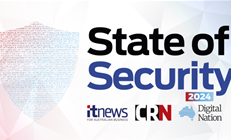Australia is also facing a significant skills shortage in cybersecurity with AustCyber forecasting a shortfall of 17,000 works by 2026.
Robert Nobilo, the solutions lead for secure networking at Fortinet, says deploying, managing and monitoring so many tools demands a different approach.
“With so many different security tools, managing, patching and tuning them can become extremely complex. Also, the lack of native integration to get a complete view of network security is driving organisations towards consolidation,” he says.
Integrating those tools can be very difficult, with many organisations opting for centralisation where the data from different tools is aggregated into a central repository. And while artificial intelligence (AI) is often touted as a solution to the challenge of finding threats and attacks from within all that data, it’s not a silver bullet.
“AI is only as good as the information that goes into the large language models,” says Nobilo. “Finding the right resources to enrich the AI is one of the biggest challenges that we’re facing and the skills shortage we’re seeing impacts AI experts as well as cybersecurity.”
The shift towards cloud and hybrid cloud, hybrid and remote teams, and distributed networks has often been secured by adopting point solutions for each change to the network and user environment. Consolidating the number of tools by looking for a platform that can provide the same or better security than five or more separate applications or services removes complexity and reduces the burden on security teams
Secure Access Service Edge (SASE) provides a platform that can support organisations as they seek to consolidate their security stack so they can minimise costs while enhancing security and enforcing consistent policies across the entire network.
Nobilo says there are three key steps organisations need to take to start the journey towards SASE and platform consolidation.
“Start by looking at your renewal schedules. Then look at your top priority projects. Is it WAN optimisation? Is it Zero Trust Network Access (ZTNA)? Are you looking at secure internet access? And finally focus on resourcing. Without the resources or the project plans in place to roll a SASE out, you're not going to have a successful deployment.”
SASE gives organisations a way to consolidate the number of different security tools they must maintain and monitor. SASE simplifies and enhances network security while reducing costs and ensuring consistent policies across the entire security stack.






















